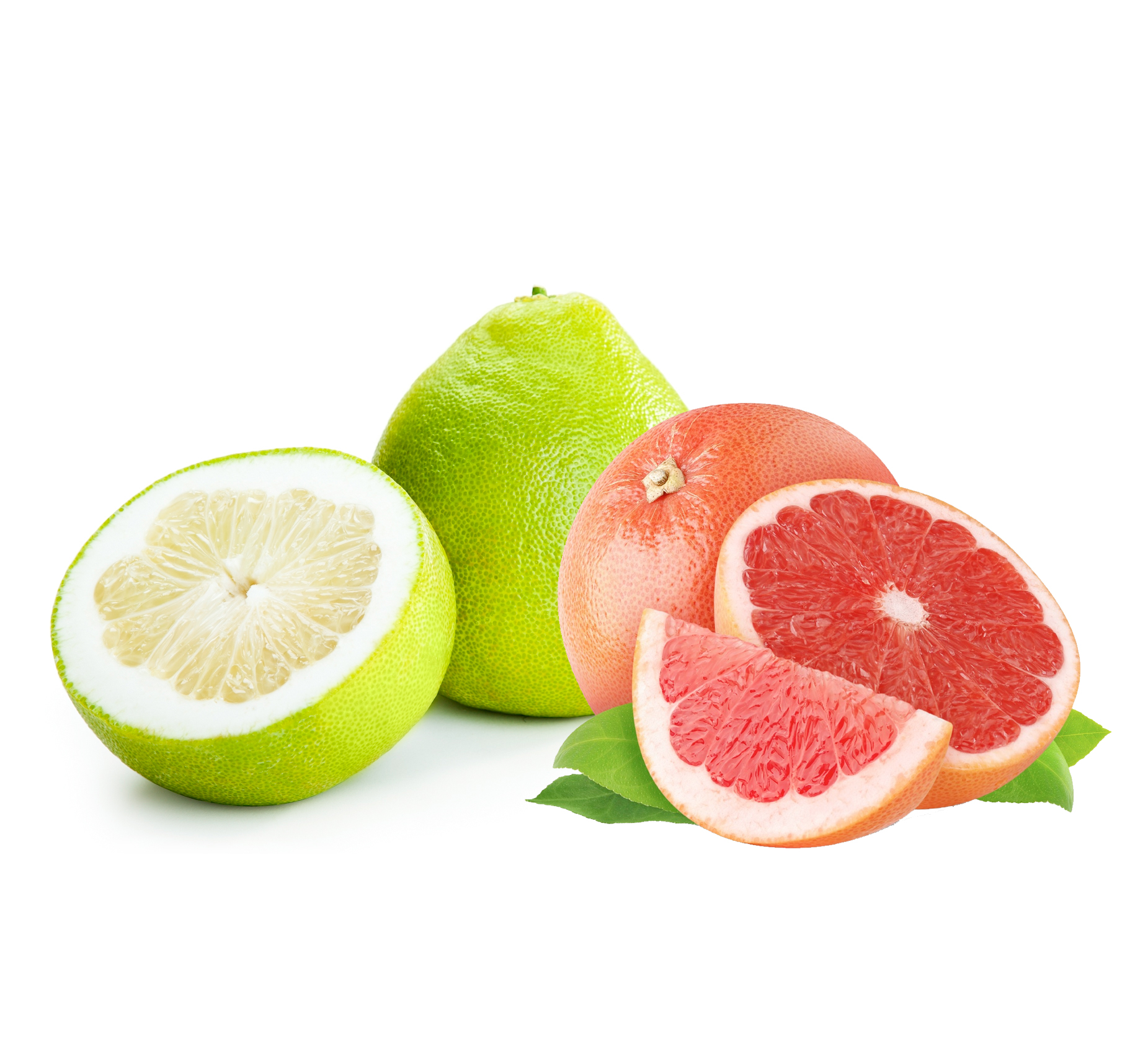Did you know the largest citrus fruit on the planet can grow as large as a soccer ball? Due to its enormous size, it is often called the ‘king of citrus fruits’. In Thailand this particularly refreshing and very juicy fruit, with a skin stippled like a golf ball, goes by the generic name of Som-o. If we even recognized one we would probably call it a Pomelo, which is thought to be a combination of the French word for apple – pomme, and the English word – melon. Other names for this tropical fruit include the Chinese grapefruit, Bali lemon, German lederorange, and the Shaddock, which just happens to be the surname of the sea captain who first introduced this fruit to the West Indies in the 17th century.
In actuality, there are two distinctly different som-os sold here. The Som-o Thong Dee, with pink flesh and a rounded shape is much sweeter than its sour cousin, the Som-o Khao Nam Pheung, which has yellow flesh and a pronounced point at one end.
Native to Thailand and most of Southeast Asia, the pomelo has since migrated to the southern regions of China, Japan, and India, the islands of French Polynesia, the Caribbean, Mexico, and the American states of California, Florida and Hawaii. The som-o is thought to be the forefather of the modern grapefruit, which botanists believe is actually a hybrid of a pomelo and an orange. The average pomelo is about the size of a cantaloupe and, depending on the variety, either round or slightly pointed in shape. It has a thick soft rind whose colour ranges from green to yellow, and is generally eaten fresh or made into a jelly or syrup. The Chinese swear anyone who eats this fruit will be blessed with good fortune!
When choosing a pomelo, select one that is firm and don’t worry about a blemish or two. Do avoid the fruits that are dull skinned or dry near the stem, as well as examples that are soft or leave an imprint when squeezed. A ripe pomelo can be stored for a week in the refrigerator or for a few days at room temperature.
The pomelo is easier eaten than peeled, as the thick rind comprises roughly half of the fruit’s total weight, and the bitter membrane surrounding each of the 16 to 18 segments must be removed before consumption. Start by cutting off the ‘cap’ and slicing through the rind vertically. Dig your fingers under the cuts and pull the rind away as if you were peeling an orange. Find the end with a dimple and pull the individual sections apart and either cut or pull away the membrane. The rind can be used in stir fries, candied or made into marmalade but the seeds should be discarded.
A peeled som-o segment looks and feels like a section of grapefruit and is very, very juicy. The round shaped som-o is said to be sweet like a melon with just a trace of citrus tang. But I wouldn’t know that because the pomelo I purchased happened to be of the pointed variety. It was very juicy. It was very refreshing. It was very sour, but it still tasted great after sprinkling a bit of sugar on each segment.
In addition to being a terrific thirst quencher, the som-o is blessed with a low calorie and high fibre content. It provides 193% of the daily value of vitamin C, and is loaded with antioxidants. Also it’s rich in potassium which helps to regulate blood pressure levels, and clear away arterial deposits. I don’t know if any of the following is true, but some say that when the pomelo is chewed slowly it will cure a hangover, and that it can cure coughs, indigestion, and even car sickness!
How to eat a Pomelo (Video):
https://www.youtube.com/watch?v=Q7wVOUr1WUw
(Note that the photo show both Pomelo and Grapefruit).







